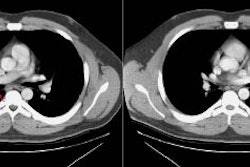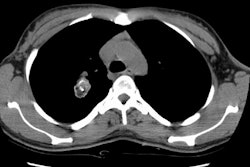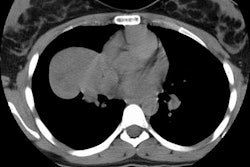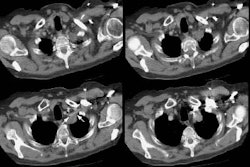Evaluation of sequential thallium and gallium scans of the chest in AIDS patients.
Abdel-Dayem HM, Bag R, DiFabrizio L, Aras T, Turoglu HT, Kempf JS, Habbab
N, Pescatore F, Sadik A,
Kowalsky W
With decreasing incidence of pneumocystis carinii pneumonia (PCP) in AIDS as a result of prophylactic regimens, there is a higher incidence of tuberculosis (TB), mycobacterium avii complex (MAC), kaposi sarcoma and malignant lymphoma. There is a need for differentiating these various pathological entities. The purpose of this study was for a retrospective evaluation of sequential thallium and gallium scans in AIDS patients for differentiating intrathoracic kaposi sarcoma from malignant lymphoma and opportunistic infections. METHODS: A total of 181 patients had both studies completed between March 1992 and May 1994. The final diagnosis was verified only in 83 patients. Results were correlated with the CD4 counts, bronchoscopic and chest radiograph findings. RESULTS: In patients with pulmonary kaposi sarcoma and no opportunistic infections (19 patients), a thallium-positive, gallium-negative pattern was detected in 17 patients with a sensitivity of 89%. In the presence of kaposi sarcoma plus opportunistic infections, this pattern was only detected in 7 of 19 patients (sensitivity dropped to 37%). In 45 patients with opportunistic infections and no kaposi sarcoma, only two false-positive findings were found in patients with cytomegalic virus pneumonia for a specificity of 96%. For the whole group of 83 patients, sensitivity was 63%; specificity 95%; positive predictive value 92%; accuracy 81%; and negative predictive value 75%. CONCLUSION: A thallium-positive, gallium-negative pattern in AIDS patients has a high specificity for the diagnosis of kaposi sarcoma, however, the sensitivity dropped from 89% to 37% in the presence of opportunistic infections.



